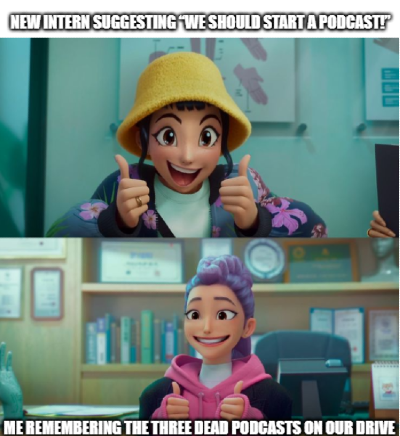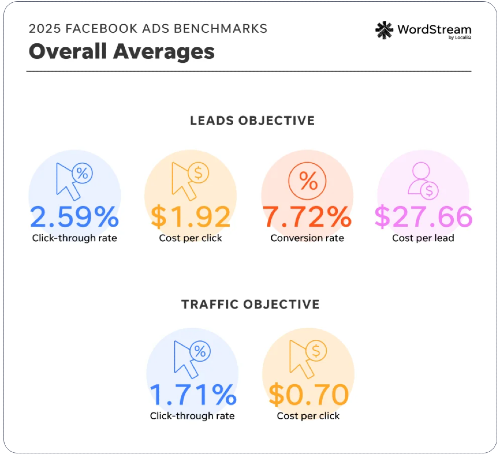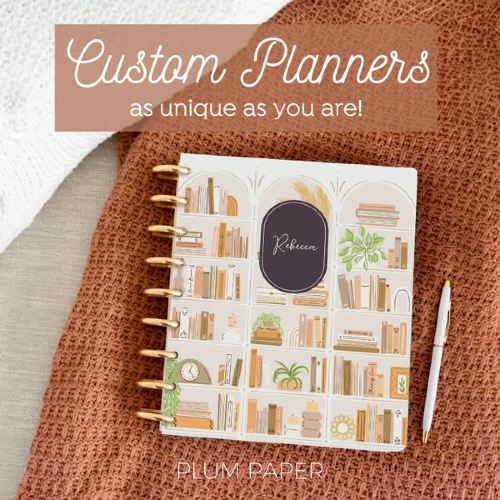Retention Lives Beyond the Cart
💡Habitual SKUs are the true retention engine, Facebook Ads Benchmarks 2025, and more!


Howdy readers 🥰

In this newsletter, you’ll find:
💡 The Post-Cart Moat: Why Habitual SKUs are the true retention
📊Facebook Ads Benchmarks 2025: Traffic Improves, Leads Struggle
🏆 Ad of the Day
If you’re new to ScaleUP, then a hearty welcome! You and 50k+ CEOs, CMOS, and marketers have reached the right place. Let’s get into it, shall we? Oh! Before you forget, if someone forwarded this newsletter to you, don't forget to subscribe to our newsletter so you never miss out!

Together with Insense
Find your perfect influencers in 48hrs - who actually follow the brief!

UGC delivers 4× higher CTRs and 50% lower CPC than traditional ads.
But... trying to source & manage creators yourself is time-consuming.
You need Insense’s carefully vetted marketplace of 68,500+ UGC creators and micro-influencers from 35+ countries across the USA, Canada, Europe, APAC, and Latin America.
Major eComm brands are using Insense to find their perfect niche creators and run diverse end-to-end collaborations from product seeding and gifting to TikTok Shop and affiliate campaigns, and whitelisted ads.
- Quip saw an 85% influencer activation rate with product seeding
- Revolut partnered with 140+ creators for 350+ UGC assets
- Matys Health saw a 12x increase in reach through TikTok Spark Ads
Try Insense yourself.
Book a discovery call by September 19th and get a $200 bonus for your first campaign.

💡 The Post-Cart Moat: Why Habitual SKUs are the true retention
Most DTC brands build forward: run ads, drive AOV, chase new customers. But top-tier brands build backward, from what people reorder, not just what they buy once.
The biggest margin isn’t in the first cart. It’s what they come back for again and again.
Most Bundles Are Built to Boost AOV.
But That’s Not the Real Game. Let’s say you stack two high-margin SKUs into a bundle. Looks great on paper. You even spike your average order value.
But if those SKUs don’t convert again within 30 days? You just front-loaded your cash flow and flattened your LTV.
Elite teams build post-cart moats:
- Start with which SKUs drive habitual repurchase
- Build bundles that feed those behaviors
- Gate high-stickiness SKUs behind reorders, not first-touch promos
This isn’t just a bundling strategy. It’s a product ecosystem logic shift.
Reorder-Back Product Mapping (3-Step Logic)
1. Identify Reorder Gravity SKUs
Track which SKUs show the highest return purchase % in 30–60–90 day cycles. These become your moat layers, products people habitually come back for.
2. Build Entry SKU Paths
Don’t lead with your best reordering products. Gate them. Lead with lower-CAC “magnet SKUs” and push users toward high-retention ones through post-purchase offers.
3. Match Behavior With Packaging
If the reorder window is tight (e.g., 14–30 days), bundle at TOF. If it’s long or use-case specific, gate behind a loyalty loop or upsell moment. This is how you shift from “cart size” thinking to retention orbit design.
Most teams guess reorder logic based on gut or static data.
With Particl, you track SKU-level demand shifts and spot reorder momentum based on real-time velocity.
That means you can:
- Lead with SKUs trending up across the category
- Gate repeat performers based on actual demand volatility
- Build post-cart strategies before competitors even spot the shift
You can start your 14-day free trial, and build product strategy like it prints margin.
Why It Matters
Every high-AOV bundle dies if it doesn’t drive second-order purchase. Building from reorder behavior flips the game from acquisition math to profit compounding.
And that’s how the best brands stay 3 moves ahead.

📊Facebook Ads Benchmarks 2025: Traffic Improves, Leads Struggle
Facebook remains a critical ad channel, but its 2025 benchmarks show a split: traffic campaigns are getting cheaper and more effective, while lead-generation campaigns are becoming costlier and less reliable. The data from WordStream LocaliQ tracks performance across industries.

The Breakdown:
1. Traffic Campaigns Deliver Efficiency - Click-through rates rose 8.23% YoY, with 71% of industries seeing improvements. CPC fell 6.67% to $0.70, far below Google’s $5.26 average, highlighting Facebook’s strength in driving affordable top-of-funnel traffic.
2. Lead Ads Costs Climb, Conversion Slips - Lead Ads CPL jumped 20.9% to $27.66, while conversion rates dropped across 80% of industries. CPC growth was limited to +2.13% YoY, keeping costs relatively low at $1.92 vs. Google’s $5.26, but overall efficiency weakened compared to last year.
3. Engagement Trends Remain Uneven - Lead Ads CTR improved in 9 of 15 industries, showing users still click, but downstream CVR fell in areas like entertainment, home improvement, and personal care. Traffic campaigns showed stronger resilience, with CPC stability or decreases in nearly half of the industries.
The data reflects a changing ad economy. Clicks remain strong, but converting those clicks into quality leads is getting harder and more expensive. Rising CPLs highlight the need for tighter campaign controls, smarter targeting, and safeguards like filtering spam when using tools such as Advantage+.

🎥 Ad of the Day

What Works and Insights
1. Personalization upfront - Showing the planner with a name on it (“Rebecca”) instantly highlights customization, which connects emotionally and makes the product feel special. Anchoring personalization in visuals is a smart move since it makes the value clear without needing explanation, and it can be extended by showing real user examples across different niches.
2. Visual storytelling through lifestyle setting - The planner is placed on a cozy, textured blanket with a pen beside it, creating a warm, aspirational lifestyle moment. This approach shows the product as part of a real daily routine. Extending this, future campaigns could use seasonal or work-from-home setups to diversify emotional touchpoints.
3. Clear message hierarchy - The headline “Custom Planners as unique as you are!” delivers the promise quickly, while the clean background keeps all focus on the product. Experts know that limiting distractions in copy and layout reduces friction, making buying decisions easier and faster.
Final Takeaway: This ad works because it combines personalization, lifestyle context, and clarity, which together lower friction and increase desire. Brands can learn that showing both emotional connection and practical product clarity in the same frame makes the choice feel obvious for customers.

Advertise with Us
Wanna put out your message in front of over 50,000 best marketers and decision makers?

We are concerned about everything DTC and its winning strategies. If you liked what you read, why not join the 50k+ marketers from 13k+ DTC brands who have already subscribed? Just follow this.
At ScaleUP, we care about our readers and want to provide the best possible experience. That's why we always look for ways to improve our content and connect with our audience. If you'd like to stay in touch, be sure to follow us EVERYWHERE🥰
Thanks for your support :) We'll be back again with more such content 🥳

